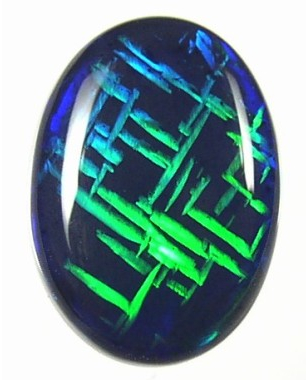Valuation of Opals
There are many factors in pricing Opal, however the most important is the Play-of-Colour. The more brilliance in colour the gem produces, along with spectral colours, the greater it's value.
An Opal with red colour play is considered more valuable than Opal with green colour play and green is more valuable than blue.
The intensity of the colour of the Opal will also increase the value. Some patterns in Opal are rarer than others and is also a factor to be considered. Shape of the stone is a consideration as a stone with a domed cut (en cabochon) is more effective in conveying the colours at every angle than one with a flat surface and tend to be quite thick in order to be cut that way.
COLOUR PATTERNS
Colour patterns throughout the stone as well as the direction of the colour is also important, ensuring that there are no “blank zones” in one area of the stone when rolling the gem from side to side, noticing if the colours are visible in all directions.
Potch patches or Potch inclusions will affect the value. Carat weight of the gemstone also plays a part in it's valuation.
Flash Pattern
Ribbon Pattern
Pin Fire Pattern
Palette Pattern
Chinese Writing Pattern
Straw Pattern
Harlequin Pattern
COLOUR
The size of the spheres produce varying colours of the spectrum. So it is the combination of diffraction (breaking up) and deflection (bending) of light rays that creates the colour in Opal.
In moving the stone, light hits the spheres from different angles and conveys the brilliance in the colour. The name Opal actually means "to see a change in colour." The change of colour within a particular stone as it is rotated and tilted is called the stone's play of colour.
The colour Red is most valued, followed by Green, and then Blue. A combination of all colours brightly through the stone is preferred and most valuable.
Precious Opal is made up of tiny, aligned spheres of transparent, hard silica, that sit together in an orderly three-dimensional frame, surrounded by silica solution. It is the order of the spheres that separates precious from common Opal. Light passes through the transparent spheres in a direct line, but when it hits the silica, it is bent and deflected at different angles, producing a rainbow effect.
Bragg angle adapted to the silica sphere structure of
precious opal producing a play-of-colour
Scanning electron micrograph showing silica sphere
structure of precious opal under 40000 x magnification










